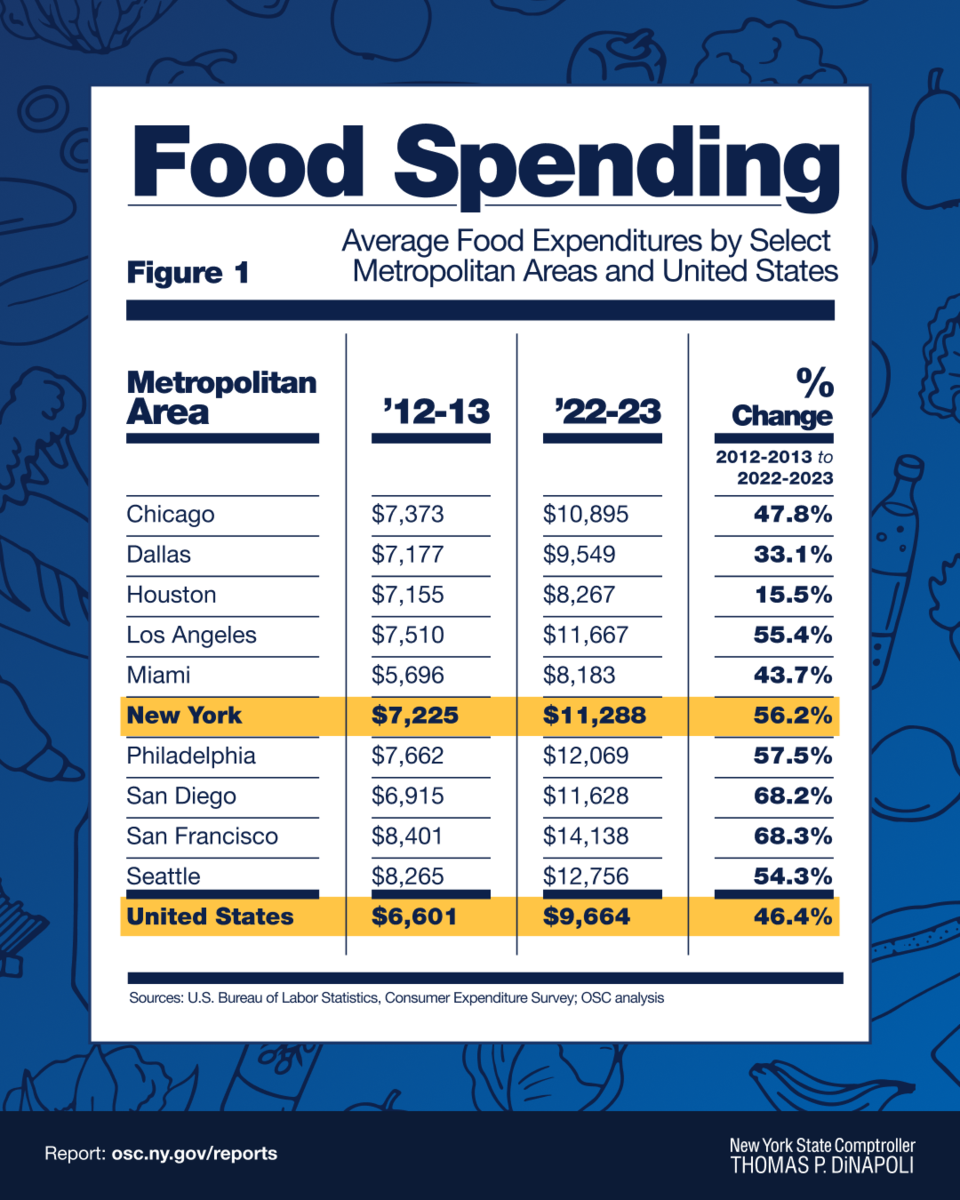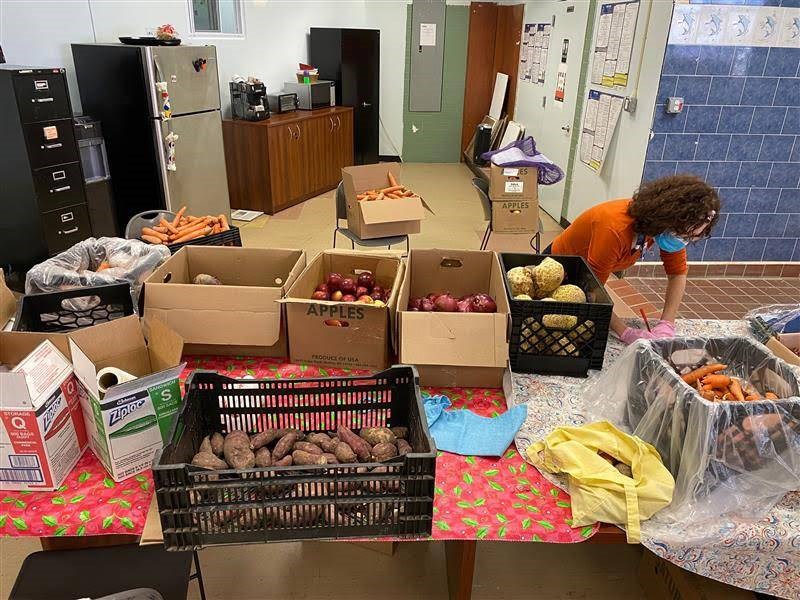As the federal government implements tariffs and cuts food-related social services programs, the rising cost of food threatens to deepen food insecurity in New York, according to a new report released by State Comptroller Thomas P. DiNapoli.
New Yorkers are spending a lot more on food every year, as food prices in the New York City metropolitan area have risen 25.2% since 2019, the report found. Average food expenditure totaled $11,288 between 2022 and 2023, a sharp rise from the $7,225 spent between 2012 and 2013. Nationally, Americans spent about $9,664 per year on food between 2022 and 2023.

Food costs in the New York City metropolitan area rose by 56.2% between 2012-13 and 2022-23, more than the 46.4% increase nationally. Metro area food cost growth exceeded income growth of about 52%, according to DiNapoli’s report.
“Food prices rose sharply during the pandemic, putting more New Yorkers at risk of going hungry," said DiNapoli. "Now the implementation of tariffs and potential cuts to federal food and other support programs may exacerbate the problem. State and local efforts to promote access to high quality, affordable food are more important than ever to reduce food insecurity and ensure New York’s families have enough to eat.”
During the pandemic, food insecurity grew in New York with one in nine, or 11.3%, of households statewide (875,000 families) facing food insecurity by 2020-22.
One of the reasons for this was the ending of extraordinary federal assistance programs, including emergency food benefits. As a result, food insecurity nationally grew for the first time in over a decade to 11.2% over 2020-22. Notably, the lapse of federal assistance programs, such as expanded SNAP benefits, came at a time when the New York City metropolitan area was experiencing strong food inflation.
The comptroller said households that rely on SNAP benefits could be at risk with federal cost-cutting measures targeting essential assistance programs. If tariffs on food items are sustained, a rise in food inflation across the New York City metropolitan area and the nation is likely to occur, particularly in food away from home, DiNapoli said.
In addition, federal programs such as the Local Food Purchase Assistance Cooperative Agreement, intended to support food banks and local groups which provide food, have had funding canceled, which may in turn make it more difficult to provide food to those most in need.




